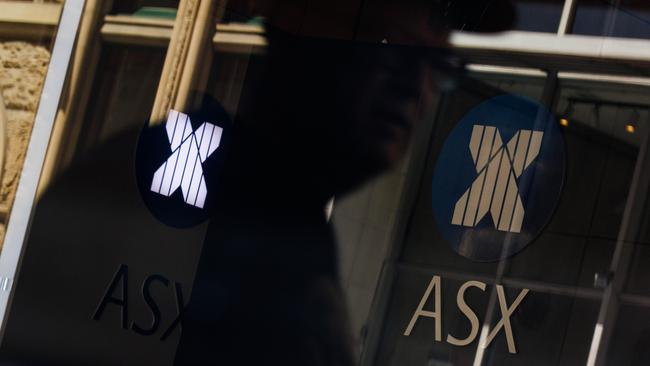Don’t fall prey to The Great Humiliator

My neck sticks out. I am not shy. You saw it last January, when I foresaw global stocks’ gangbusters 2024. Ditto 2023.
But overconfidence is poison. I have long called the stockmarket “The Great Humiliator” (TGH).
It seeks to humiliate as many investors as possible, for as much money as possible for as long as possible. Overconfident investors are its prey.
TGH has painfully humiliated me plenty over my 53-year investment career. Lesson learned? Good forecasting requires knowing something big others missed. For me, that isn’t now … yet.
Forecasting correctly comprises three steps: One, assess possibilities. Two, envisage what others miss or can’t fathom. Three, assign probabilities. If one dominates, that is the forecast.
Three market outcomes seem similarly likely now. None dominates. The MSCI World index could deliver another 20-plus per cent gain. Or dip a little, -7 per cent or so. Or grind out low single-digit gains. I can only eliminate low double-digit returns — the professional forecasters’ consensus — which I proved decades ago doesn’t happen.
Australia likely follows global stocks’ direction. Why? The ASX is strongly correlated with world stocks, deviating largely based on sector differences. Currently, market drivers, especially politics and sentiment, are in flux. Clarity comes soon.
The happiest scenario, up 20-plus per cent, would shock investors the most. Three straight 20-plus per cent years? Legendarily rare! America’s S&P 500 hasn’t done it since the 1990s. That few expect it makes it likelier. But, fear of downs now is also less likely as the year after 20 per cent years has been positive 80 per cent of the time historically.
Politically, US presidential inaugural years, like 2025, have been positive 60 per cent of history. America’s huge global weighting and highly correlated markets render this a positive. When up, such years are usually huge.
But, 40 per cent of inaugural years fall modestly. Enter the down 2025 scenario.
America’s election outcome elated Republicans. Maybe too much. Stocks routinely do what few expect. With politics, they “perversely invert”. Generally, American investors lean more conservative, viewing Republicans as low tax, pro-business and small government — and Democrats the reverse. Hence, in presidential election years when Democrats won, caution kept returns below average. Republican victories, like 2024, buoy returns.
Presidents routinely accomplish less than hoped or feared. They aren’t kings. In inaugural years, this creates positive surprise with Democratic presidents and above-average stockmarket returns; only one mild negative since 1946. With Republican presidents, all but four inaugural years were negative.
Donald Trump could exceed expectations as he did in 2017, but bickering within small Republican congressional margins could dilute legislation heavily, breeding disappointment and a typical Republican presidential inaugural year — down slightly.
Scenario three: Stocks rise slightly amid a sentiment tug of war. European and Australian bears stew over tariffs, slow rate cuts and 2024’s lesser non-US returns. Americans, more bullish, tout American Exceptionalism and Trump 2.0. These two groups may offset — delivering wiggles and waggles netting to little, frustrating everyone.

So, I wait seeking signs tilting one scenario towards dominance. Maybe within Senate confirmation hearings for Trump’s voluminous lesser appointees (the non-headliners who actually shape policy). Or maybe within Canadian, German and French political chaos, potentially yielding bullish parliamentary gridlock?
Beyond politics, there is much which routinely tilts sentiment early each year, making one of the scenarios dominant. Then, hopefully knowing something(s) significant others don’t, I will be back forecasting that.
Meanwhile, for growth-oriented investors, own stocks. The riskiest possible move is selling out … then watching stocks skyrocket (the 20-plus per cent scenario).
If you exit and stocks rise, the missed returns which otherwise compound thereafter become virtually impossible to recoup without taking catastrophically crazy risks. But, small negatives are routinely quickly recouped.
Rule: If you haven’t a valid reason to be bearish, always be bullish. Why? Stocks rise more than fall.
US stocks rose in 73 per cent of years (in USD) since 1926. Britain’s FTSE All Share has been virtually identical (in GBP). MSCI’s Australia Index (used for its longer history than the ASX) matched that since its 1969 launch.
That’s almost three up years for every one down year. Betting against 3:1 odds based on your opinion, ego, thinking you’re smarter or wiser — anything but knowing something big and bad others don’t — is a fool’s bet. Fools lose.
Even if my forecast lands on “down-a-little”, stay invested in case I’m wrong. Markets routinely recoup mild declines easily, and soon.
As one scenario gains primacy, I will give a more definitive forecast and resulting suggestions. For now, my plan: Own stocks, keep researching, be patient. You can, too, using all I detailed here. We needn’t fall prey to TGH.
Ken Fisher is executive chairman of Fisher Investments





What will the ASX and global stocks do in 2025? Despite trying hard, I humbly don’t know … yet … but I have a plan. Let me explain.